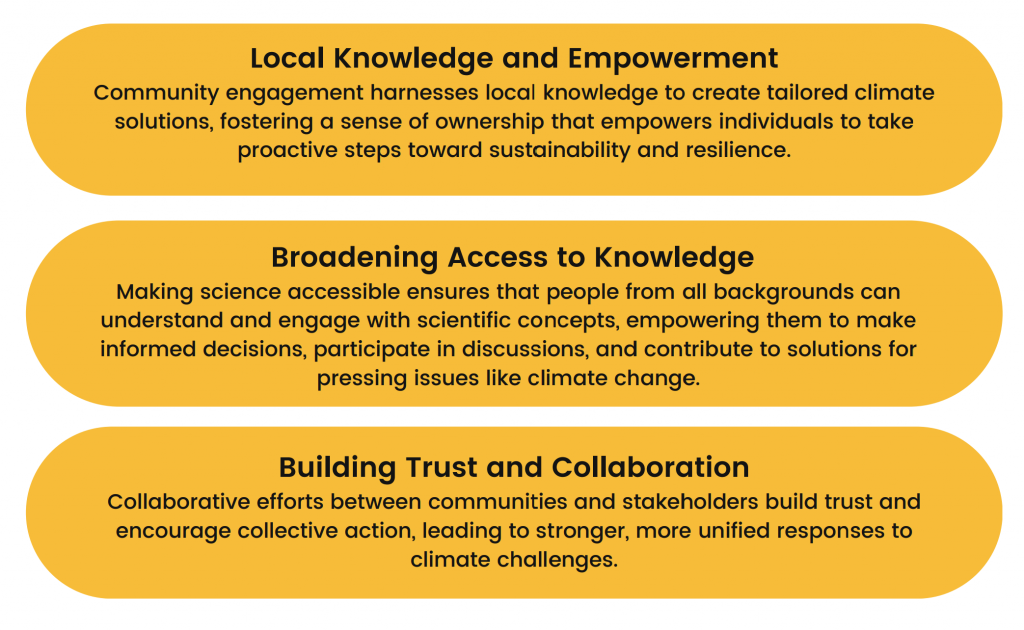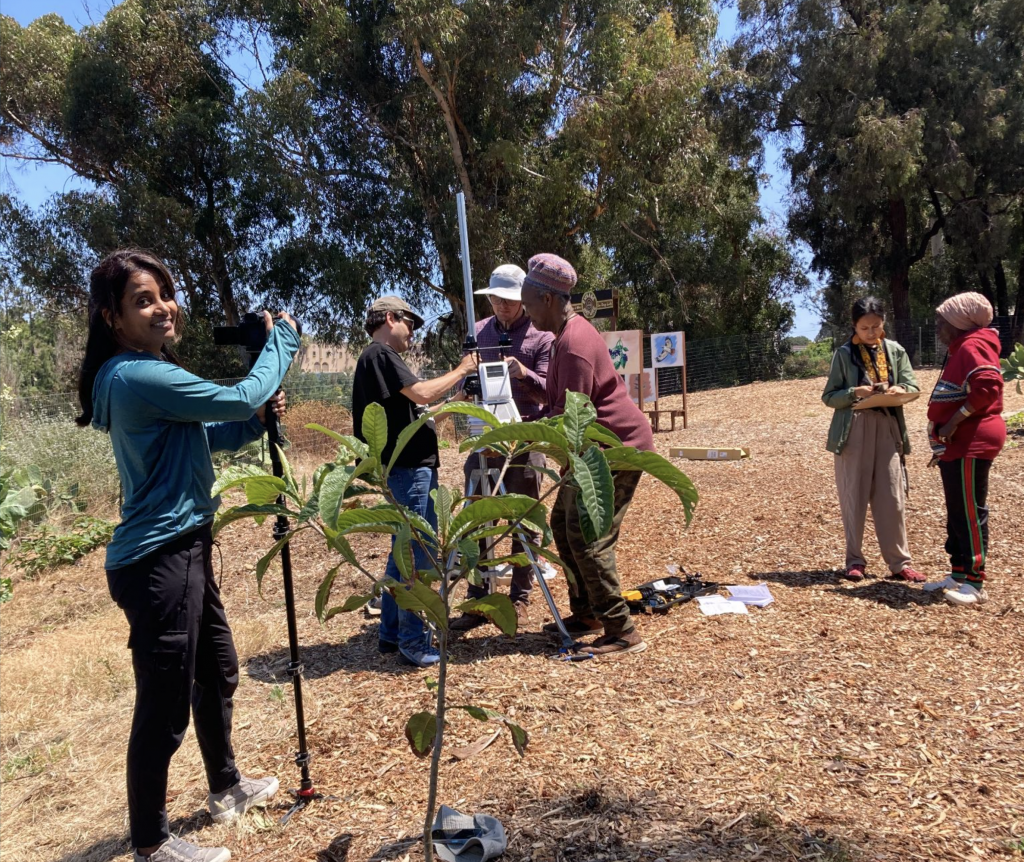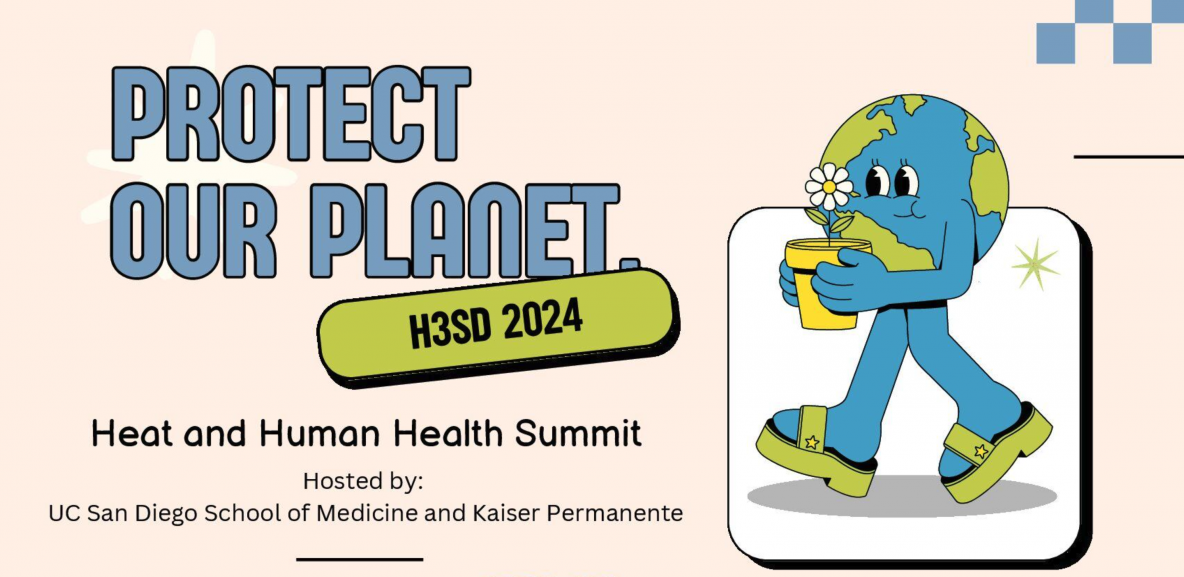Written by: Nan Renner, Caitlin Jones-Ngo, A-bel Gong, and Maren Hale
As extreme heat becomes a greater threat, how can we best prepare ourselves and our communities? What should everyone –including youth– in our region know about extreme heat? These are some of the questions that a diverse group of healthcare practitioners, academic researchers, community leaders, students, climate activists, and members of the public sought to answer at the second annual San Diego Heat and Human Health Summit (H3SD), hosted by UC San Diego School of Medicine and Kaiser Permanente this past August.
H3SD is an annual event dedicated to sharing knowledge on the environmental health and justice implications of climate change –specifically extreme heat– and bringing together people from a variety of fields, industries, and career stages to discuss solutions. This year, several members of the SoCal Heat Hub team were able to attend and to present on the work that we do.
SoCal Heat Hub’s College Corps Fellow, Nicole Fassina (University of San Diego class of 2024), had the opportunity to present on her work at the Summit’s evening poster session. In her poster, titled “Community Engagement as an Approach to Climate Resilience and Environmental Justice”, Nicole showcased the research she conducted while working at USD and alongside the Heat Hub on the topic of extreme heat and its impacts as well as the importance of community engagement in this field. This was an excellent way to celebrate Nicole’s final weeks with the Heat Hub and acknowledge all her hard work and research!
Nicole’s full poster is available to view here.

A portion of Nicole’s poster highlighting the importance of community engagement.
Caitlin Jones-Ngo, a postdoctoral researcher in Tarik Benmarhnia’s Climate Change Epidemiology Lab, presented a talk on the public health threat posed by extreme heat. Caitlin reflects on her experience at H3SD:
“The Heat and Human Health Summit in San Diego, hosted by the University of California San Diego School of Medicine and Kaiser Permanente, gathered a diverse audience of medical students, health professionals, public health officials, academic researchers, and representatives from community-based organizations, all passionate about addressing climate change and its intersection with health and environmental justice. I had the opportunity to share recent findings from climate epidemiology research in my presentation, “Converging Crises: Extreme Heat, Climate Change, and Environmental Injustice,” highlighting how increasingly severe extreme heat –exacerbated by climate change– poses a significant public health threat. In California, the localized nature of heat impacts, coupled with environmental justice issues, results in differential exposure and vulnerability, particularly in communities facing challenges from compounding climate hazards like wildfire smoke. It was inspiring to discuss these critical topics with frontline providers who can implement this knowledge in their work. The audience’s strong interest also underscores the importance of studying the complex interplay of heat, social determinants of health, and compounding climate risks. With multiple factors amplifying heat vulnerability, it is urgent to focus on adaptation strategies to build climate-resilient health systems that prioritize risk reduction and equitable access. The summit provided a valuable platform for disseminating actionable insights and fostering collaboration among professionals dedicated to mitigating the profound health impacts of extreme heat in San Diego and beyond.”
Also at the H3SD Summit, Heat Hub co-PI for Education, Nan Renner, gave a presentation on the Hub’s education and outreach activities. During her talk, she used multisensory experiences and social interaction to engage students and medical professionals with Heat Hub driving research questions.
First with aromatic fresh plant cuttings, then with data visualizations, Nan invited participants to observe and notice, then give voice to what they wonder. People noticed the different textures, sizes, and aromas of the leaves; they wondered about landscape uses, native and non-native plants, and water demand. When looking at data related to land surface temperature, vegetation, and hospitalization rates (an indicator for human health impacts), people noticed spatial correlations. Higher temperatures, less vegetation, higher hospitalization rates overlap in space. They wondered about root causes and solutions. In K12 science education, we use “Notice and Wonder” routines to compel active engagement, motivate inquiry, and think about systems and causal relationships. This proved a useful strategy with adult learners as well.

A photo from the weather station installation at WorldBeat Cultural Center in Balboa Park – part of the Heat Hub’s education activities. Photo by Nan Renner.
In our K12 and community partnerships, we co-design resources and learning experiences. Following show-and-tell about work in progress, participants asked questions and shared their knowledge. Medical students and professionals confirmed the relevance of extreme heat in their practice, and they embraced our take-away message: We are all learners and we are all educators.
H3SD 2024 was a tremendous success for public health outreach and an excellent opportunity to both communicate and learn about extreme heat. Many thanks to the event’s organizers and champions for climate justice and public health, San Diego Pediatricians for Clean Air, and particularly Vi Nguyen. We look forward to participating in H3SD 2025!
Header image: Portion of the flyer for H3SD 2024. Image credit: San Diego Pediatricians for Clean Air.

